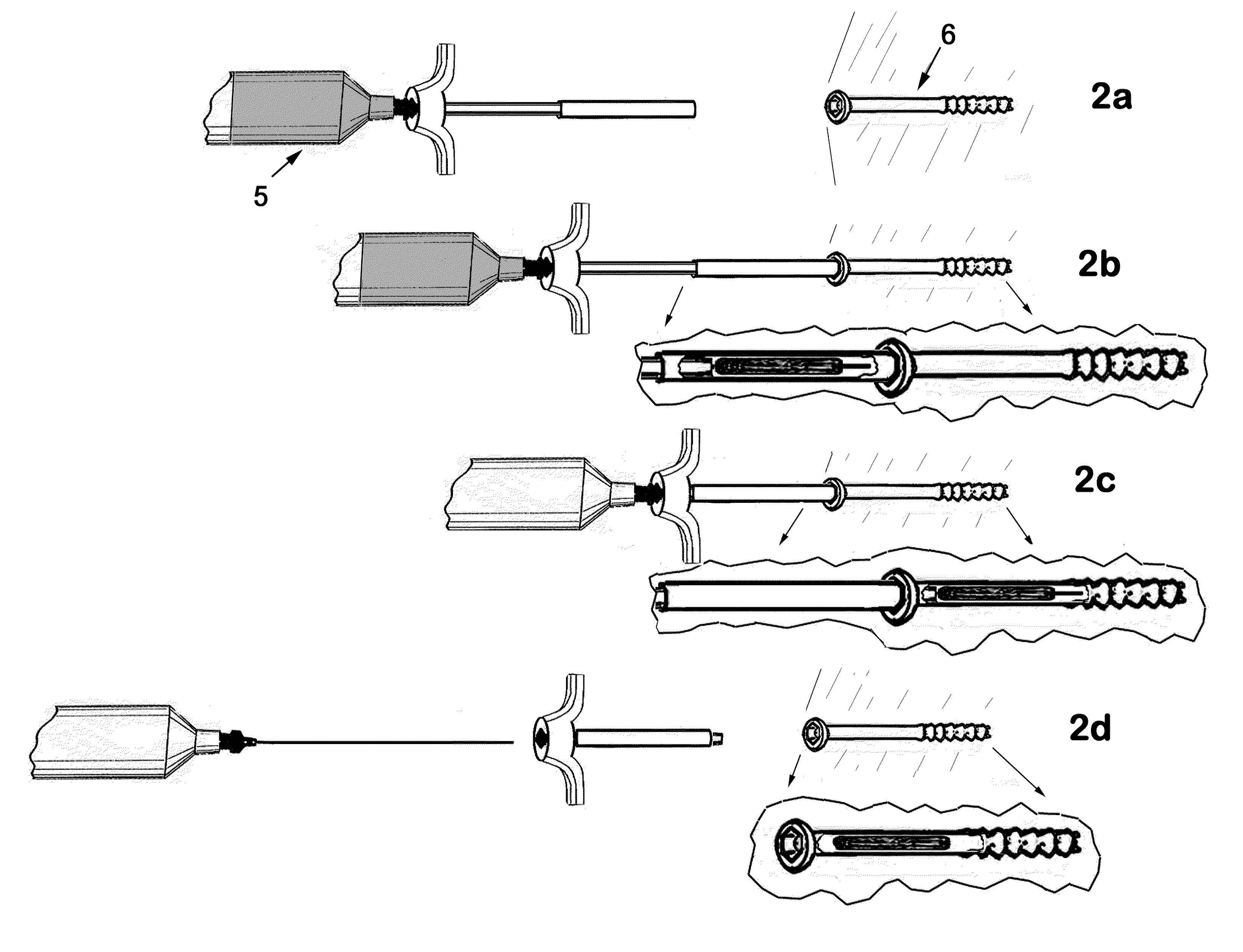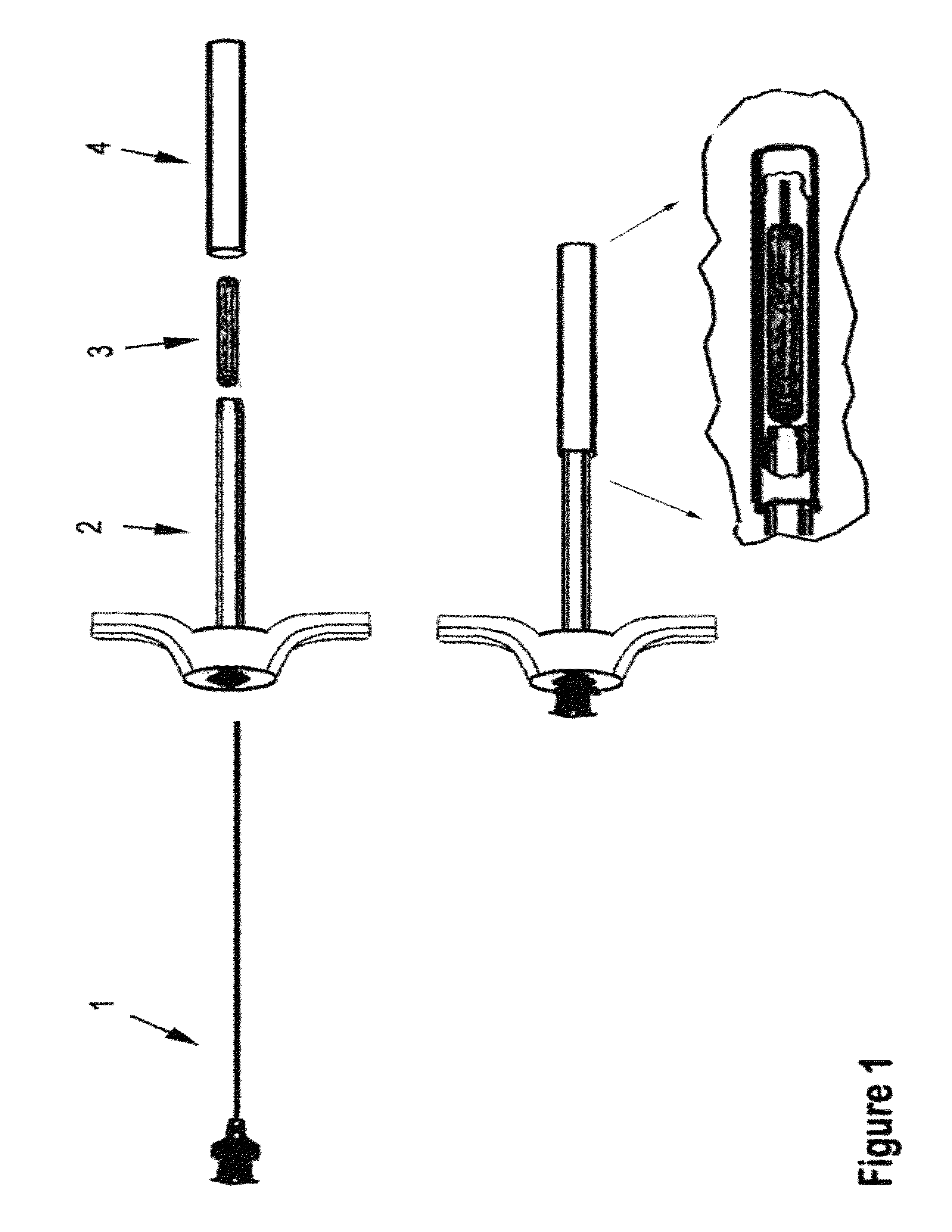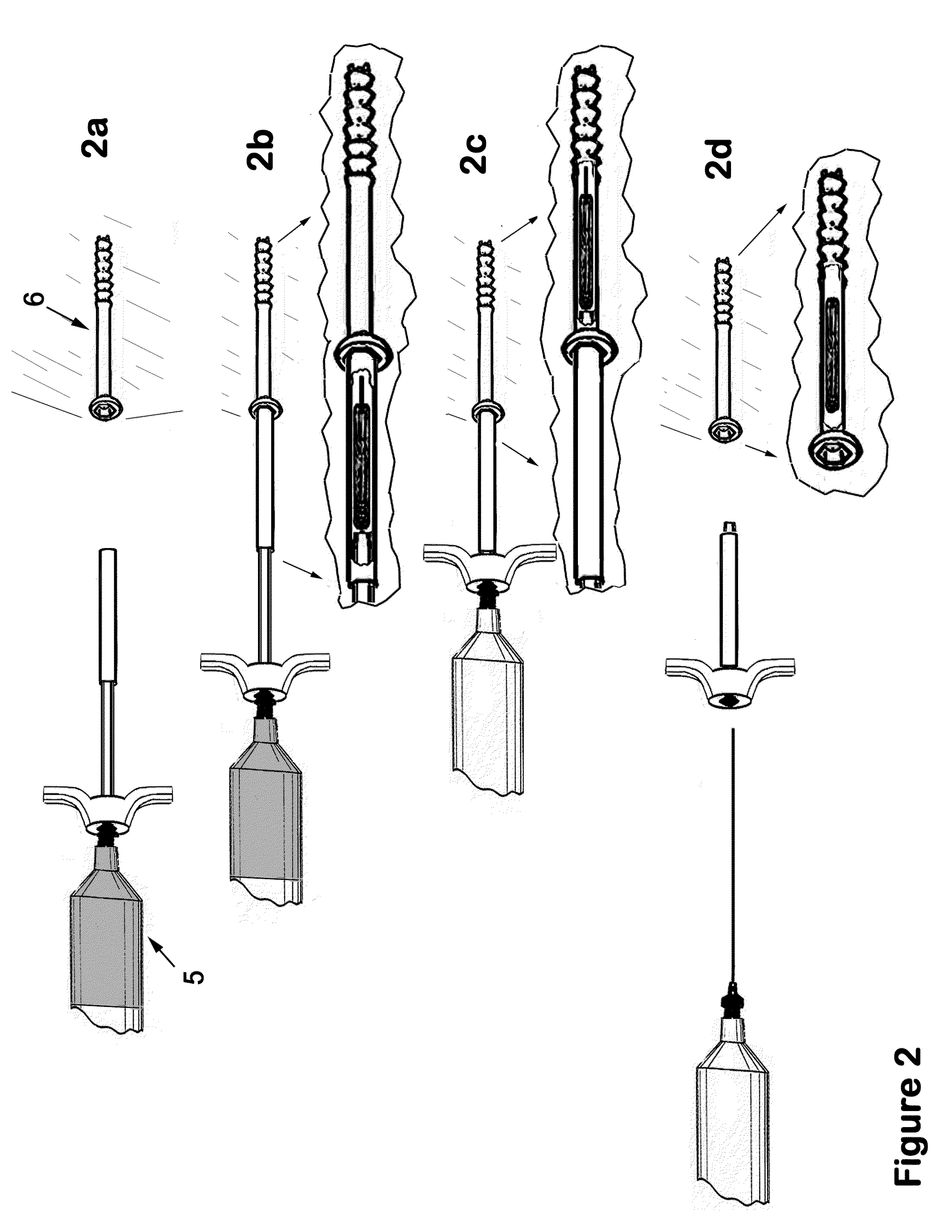Therapeutic material delivery system for tissue voids and cannulated implants
a technology of tissue voids and therapeutic materials, applied in the field of drug delivery, can solve the problems of difficult to achieve, difficult to confirm placement, and difficulty in detecting the depth of needle penetration in the bone itself,
- Summary
- Abstract
- Description
- Claims
- Application Information
AI Technical Summary
Benefits of technology
Problems solved by technology
Method used
Image
Examples
example 1
Treatment of Chronic Degenerative Insertional Tendiopathy
[0141]Surgical treatment is provided for a patient with chronic degenerative insertional tendinopathy with thickening fibrosis and tearing of the Achilles tendon from the calcaneus extending approximately 5-6 cm, who has failed conservative treatment. In surgery, the peritinon is incised, the tendon is debrided and all non-viable tendon is removed, the diseased portion of the calcaneus is resected, and the flexor hallucis longus (FHL) tendon is approached. A section of the FHL tendon is harvested and formed into a 5 mmØ×3 mm plug and inserted and securely packed into a plug guide cannula of the present invention by trained personnel. A 2 mmØ guide wire is driven into the calcaneus at the desired point of reattachment of the tendon. A 5 mmØ cannulated drill is then used over the guide wire to create the attachment tunnel. The free end of the portion of FHL tendon which remains attached to muscle is sutured and passed through th...
example 2
Treatment of Osteopenia and Interochanteric Femur Fracture
[0142]Surgical treatment is provided for a patient with an osteopenia and intertrochanteric femur fracture. The fracture is reduced and a hip screw and plate device is surgically inserted and affixed using 4.5 mmØ×4 cm cannulated titanium screws. In the process of screw placement, the screws are driven to a point representing 75% of the final insertion depth. At that point, a device of the present invention is utilized in conjunction with the screw. The device comprises, in part, a calcium putty plug, and has attached to the needle, a reservoir of methyl-methacrylate bone cement. The device is abutted to the partially inserted screw; the plug pusher is displaced into the plug guide cannula to a point where the plug and the needle tip are displaced into the target screw. The bone cement is then injected into the screw. The needle is removed, and then the plug pusher is removed. The screw is then driven the remaining portion to...
example 3
Avascular Necrosis of the Femoral Head
[0143]A patient with avascular necrosis of the femoral head prior to the onset of subchondral fracture undergoes a procedure for structural decompression that involves core drilling, flushing of the affected zone with a solution thought to halt osteoclastic breakdown (in cases of suspected infection, an antibiotic treatment may be added or substituted), and then treatment of the area with cellular therapy through the insertion of mesenchymal stem cells (MSC) in a autologous plasma matrix which also contains therapeutic levels of platelet-derived growth factor (PDGF). This is accomplished through the following procedure:[0144](a) An incision is made to access the trochanteric section of femur.[0145](b) A 6.5 mmØ outside×60 mm surgical cannula is introduced into the incision and placed on the bone as a guide.[0146](c) A 5 mm drill is introduced into the cannula and under image guidance the affected area is penetrated by a plurality of holes origin...
PUM
 Login to View More
Login to View More Abstract
Description
Claims
Application Information
 Login to View More
Login to View More - R&D
- Intellectual Property
- Life Sciences
- Materials
- Tech Scout
- Unparalleled Data Quality
- Higher Quality Content
- 60% Fewer Hallucinations
Browse by: Latest US Patents, China's latest patents, Technical Efficacy Thesaurus, Application Domain, Technology Topic, Popular Technical Reports.
© 2025 PatSnap. All rights reserved.Legal|Privacy policy|Modern Slavery Act Transparency Statement|Sitemap|About US| Contact US: help@patsnap.com



